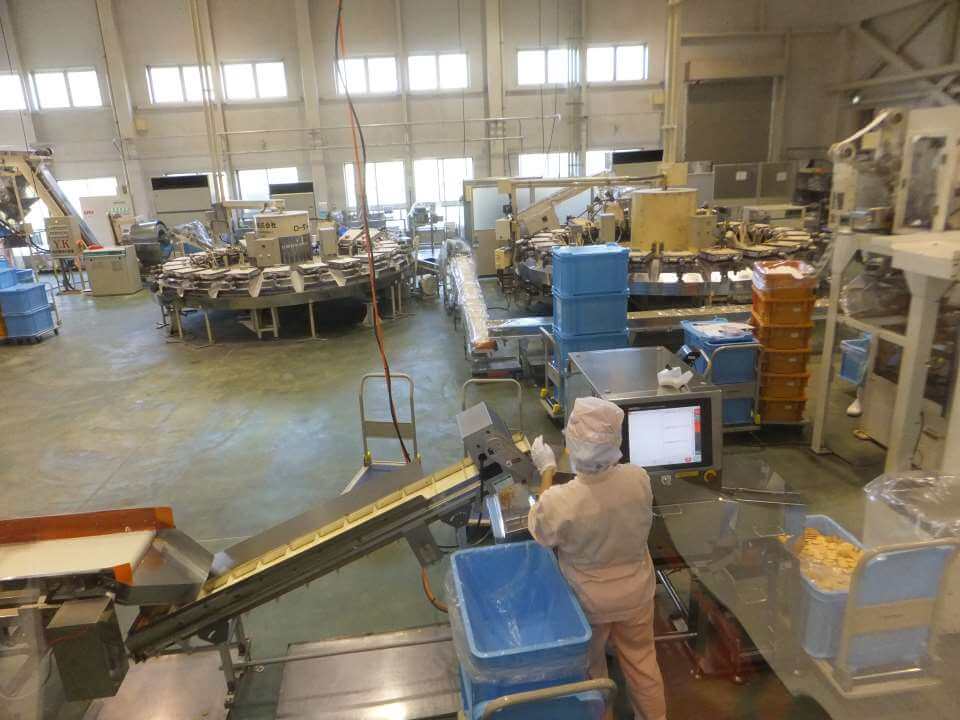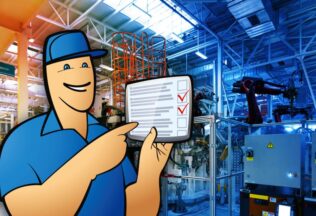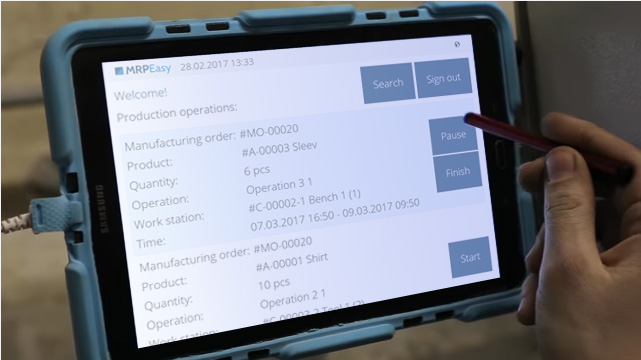MRP System Series #5: What Makes a Good MRP System?

An MRP system is basically an ERP system for manufacturers. It is the central application for managing core operations, such as production planning and reporting, procurement, sales and inventory.
The idea is to have everyone under one roof in a single digital room. Firstly, to have an accurate and reliable inventory overview in real-time through automation of routine tasks, and secondly, to have better communication, so it would be possible to make more informed decisions.
A good MRP system should be:
- Easy to use: It’s a tool that should make everyone’s life simpler. It is going to save time and money, if even the least tech-savvy dinosaur can be taught to use it in a reasonable timeframe, or even better, can learn it on his/her own. Manufacturing workers are often not highly qualified in IT (why should they be?), so the simpler the tool is to understand and apply, the better.
- Easy to maintain: Again, the main objective of a manufacturing company is to produce goods and earn money from the sales of these goods. Therefore, a company shouldn’t need a separate IT team, or department, just to keep one software tool running – this is a big expense.
- Easily available: This tool should be available when you need it and where you need it. It’s of limited use if it sits on a desktop computer in an office 100 yards from the shop-floor. It needs to be accessible – right on spot where/when needed, within everyone’s’ reach – a single connected, real-time system with many access points.
Overall, a good MRP system benefits the business and helps to realize:
- Better communication and decisions
- Higher productivity
- Shorter lead times
- Lower production cost
- Less human-error
The critical core functions of a good MRP system are:
- Material planning and production scheduling
- Production control and shop-floor reporting
- Inventory management
- Procurement
- Sales and order fulfillment
- Product costing
The manufacturing software is not only for production or inventory planning; it is also for other operations. Here’s a breakdown of the benefits that people in different roles receive:
- Sales: Has a real-time overview of the status of every order, plus can accurately estimate delivery time and cost with a click of a button, which will save hours and headaches.
Plus, once the customer calls, there’s no need to run to the production manager and upset everyone – just reply: “ Jones, I have been keeping my eyes on your order, it will be shipped on time. It is in production right now. Thank you for ordering!” - Production manager: Can easily schedule operations knowing that work stations are not over booked, materials will be available and procurement notified, if necessary. A real-time overview of the production schedule, inventory, demand and the shop-floor guarantee better decisions.
- Shop-floor worker: Knows what needs to be done, where and in which order. Paper-free reporting saves time and provides clarity (perhaps, above all, no more deciphering of illegible handwriting!).
- Procurement: Knows what needs to be procured, based on low inventory levels or demand from sales or production. The software displays purchase requirements and can even automatically generate purchase orders. Having vendor information and purchase terms (prices, lead times, etc.) in one place avoids many mistakes.
- Inventory: As everyone’s actions directly affect the inventory, all information is in constant movement. There is a clear overview of what is on hand, what is available, what is booked, what is expected to arrive, when, what is already promised to someone, etc. Plus, information, such as where are items located, in what batches, what is the history of items etc, is constantly updated – real time.
- Management and Finances: Have clear real-time reports on stock movements, stock balance, product cost, COGS and cost-profit information. Even more, the MRP system accurately estimates product cost before production and, once in production, the system automatically calculates the actual cost based on shop-floor reporting and actual material consumption.
MRP system series:
MRP System Series #7: The right attitude for MRP system implementation
MRP system Series #6: Implementing Manufacturing Software. Benefits from Process Changes
MRP System Series #5: What Makes a Good MRP System?
MRP System Series #4: How Much Detail to Input into the MRP System?
MRP System Series #3: Top 5 Mistakes in Implementing Manufacturing Software
MRP System Series #2: What is the difference between MRP and ERP?




